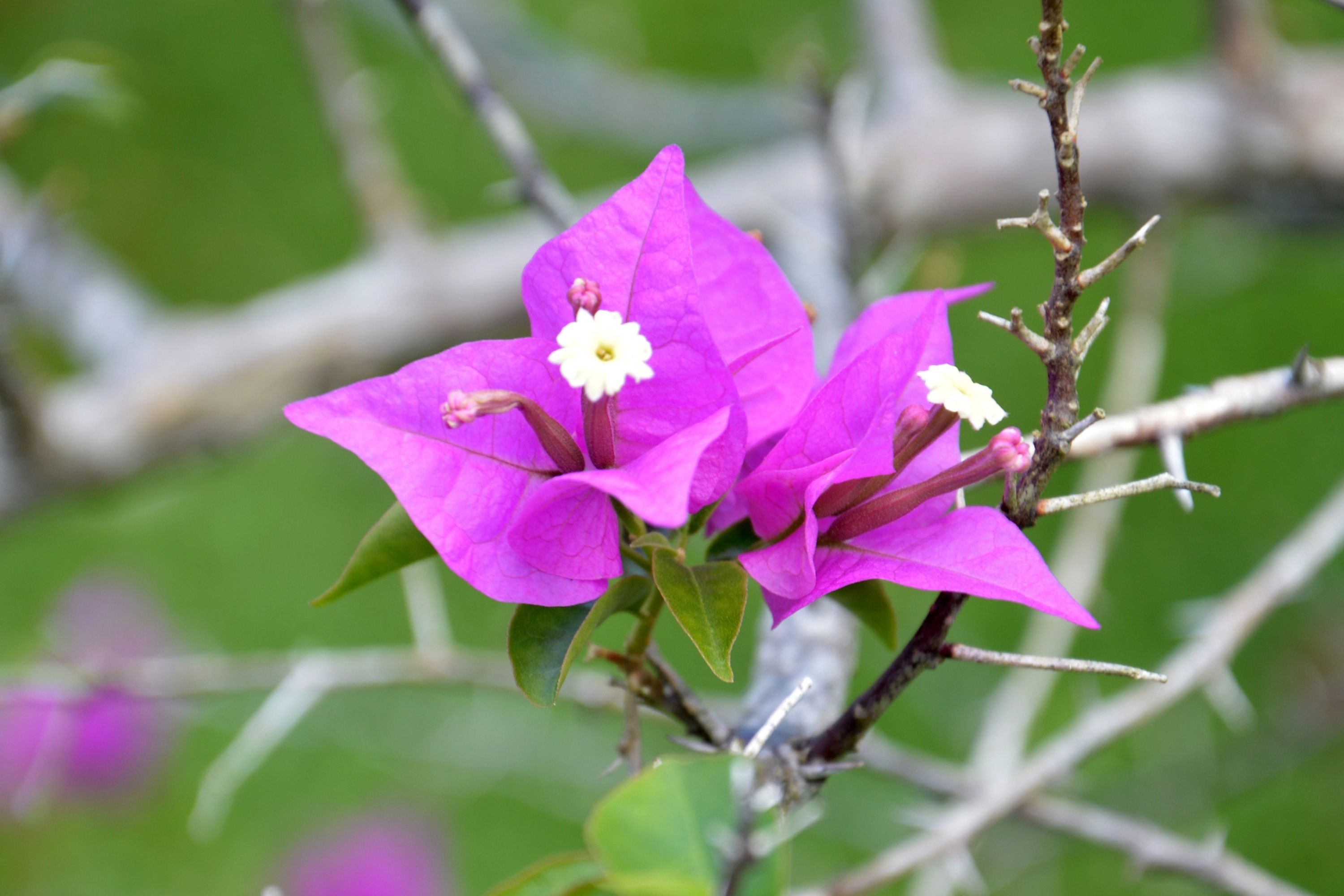Bougainvillea
(Bougainvillea spectabilis)

Description
Bougainvillea spectabilis, commonly known as Bougainvillea, is a perennial flowering plant that belongs to the Nyctaginaceae family. It is native to South America and is widely cultivated as an ornamental plant in tropical and subtropical regions around the world. Bougainvillea is popular for its vibrant, showy flowers and its ability to climb and cover walls, fences, and trellises. In this article, we will discuss the taxonomy, morphology, cultivation, and uses of Bougainvillea spectabilis. Taxonomy: Bougainvillea spectabilis was first described by the French botanist Philibert Commerson in 1760. The genus Bougainvillea was named after Louis-Antoine de Bougainville, a French navigator who discovered the plant during his voyage to Brazil. Bougainvillea spectabilis is also known by several other common names, including Paper flower, Napoleón, Veranera, Trinitaria, and Buganvilla. Morphology: Bougainvillea spectabilis is a vigorous, woody climber that can grow up to 10 meters in length. Its branches are thorny and its leaves are oval, pointed, and up to 13 cm long. Bougainvillea flowers are actually small, white or cream-colored, and inconspicuous. However, they are surrounded by large, colorful, papery bracts, which are the true flowers of the plant. The bracts are typically pink, red, purple, orange, or yellow, and can be up to 10 cm long. Bougainvillea blooms profusely in the summer and fall, but may also flower sporadically throughout the year. Cultivation: Bougainvillea spectabilis is a popular ornamental plant due to its showy flowers and its ability to grow and cover walls, fences, and trellises. It is widely cultivated in tropical and subtropical regions around the world, including South America, Africa, Asia, and Australia. Bougainvillea thrives in full sun and well-drained soil, and can tolerate drought, heat, and poor soil conditions. It is often trained as a climber or pruned into a shrub or hedge. Bougainvillea can also be grown in containers, but requires regular pruning to keep it from becoming too large. Propagation: Bougainvillea spectabilis can be propagated by seeds or cuttings. Seeds should be planted in a well-drained soil mixture and kept warm and moist until germination. Cuttings should be taken from the current season's growth and planted in a well-drained soil mixture. The cuttings should be kept warm and moist until they root, which typically takes 2-4 weeks. Uses: Bougainvillea spectabilis is primarily grown as an ornamental plant for its showy flowers and ability to cover walls, fences, and trellises. Its vibrant bracts are often used in flower arrangements and its dried flowers are sometimes used as a substitute for confetti. Bougainvillea leaves have also been used in traditional medicine to treat various ailments, including diabetes, hypertension, and inflammation. Conclusion: Bougainvillea spectabilis is a beautiful and versatile plant that is popular for its showy flowers and ability to climb and cover walls, fences, and trellises. It is widely cultivated as an ornamental plant in tropical and subtropical regions around the world, and can also be used in flower arrangements and traditional medicine. Whether grown as a climber or pruned into a shrub, Bougainvillea is sure to add color and beauty to any garden or landscape.
Taxonomic tree:







